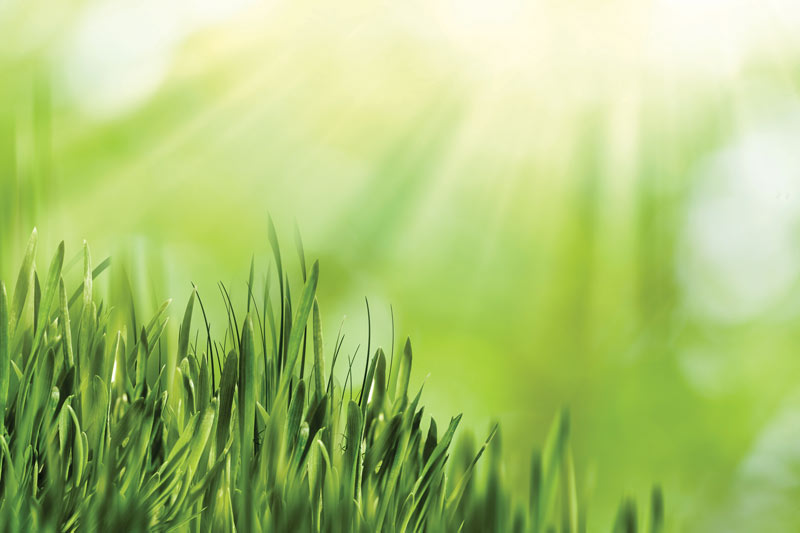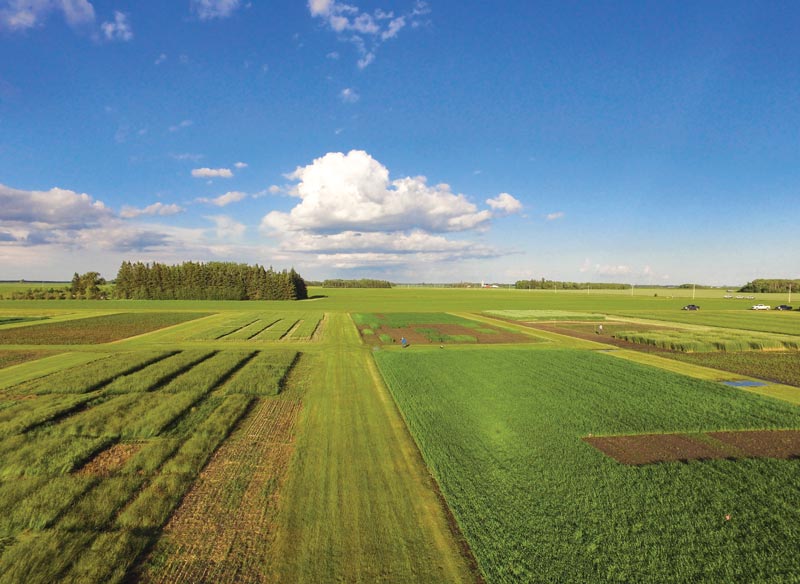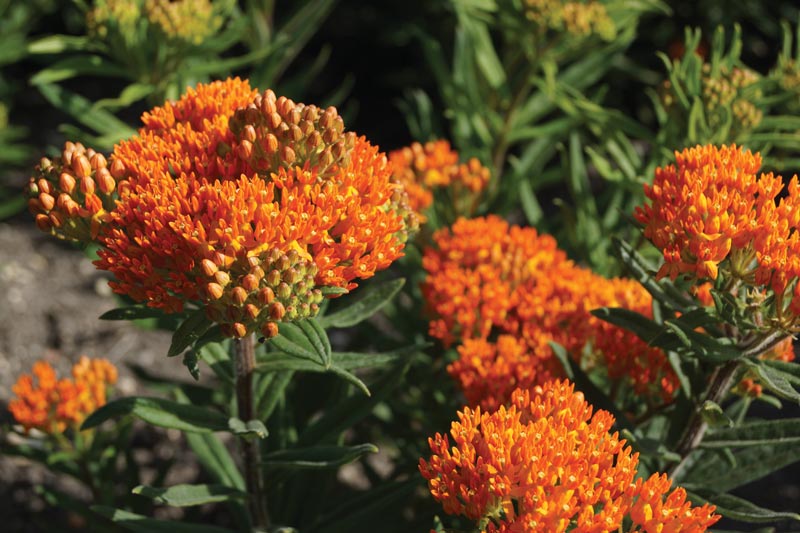
As unlikely as it may seem now, in March and early April 2020, the turfgrass seed industry in the United States and parts of Europe had a busy — in some areas, record-breaking — business despite the confusion and distress resulting from the COVID-19 pandemic.
Golf courses that remained open were doing business as usual, and many of those that were closed took the opportunity to renovate or do other maintenance projects if they were permitted. Seed companies found success in states where landscaping and lawn care companies are considered essential businesses. Retail sales were also important, as people who were newly confined to their homes to prevent the spread of the virus worked in their yards and spruced up their lawns.
In the U.S. and most areas of Europe, seed companies are included under an agricultural exemption and are considered “critical infrastructure,” or essential operations, which means they are able to continue their business when others must close to enforce social distancing.
The primary concern expressed by representatives of seed companies in Oregon was protecting the health and safety of employees, suppliers and customers. Most employees are working from home, but in cases where they must go to work to blend seed and prepare it for distribution, work areas have been modified, if necessary, to maintain appropriate distance between individuals.
A variety of additional solutions are being used across the industry: Shifts are being staggered, employees are working alternate weeks, and anyone who is sick or has been directly or indirectly exposed to the virus is put on paid leave. In addition to following Centers for Disease Control and Prevention protocols for sanitation and distancing, companies are requiring customers to call in orders in advance and schedule pickup times to limit the number of people at distribution points.
The exemption for seed businesses extends to truck drivers who have been given government permission to pick up and transport seed. Drivers now do all of their paperwork electronically (they don’t even sign for a shipment) and distance themselves by remaining in their trucks during pickup and delivery.
So far, the seed companies have been able to continue their business, providing supplies to their customers and paying their employees. All of them expressed guarded optimism about the future.
Seed Days, previously scheduled to take place in Oregon’s Willamette Valley in late June, has been postponed until June 15-17, 2021.
Turf seed: 2020 and beyond
The turfgrasses featured in GCM’s annual list are all new named varieties that are scheduled for release this year or were released since the publication of the 2019 Seed Update. GCM works diligently to avoid publishing information about varieties that have already been featured in the magazine.
Only 17 new varieties were submitted for the Seed Update this year — the same number as last year, but fewer than in 2017 and 2018. This is just a normal lull in new variety releases that follow the research results from the National Turfgrass Evaluation Program. Turfgrass seed companies select the varieties they will release based in part on how those varieties perform in the NTEP trials, which are held across the country to test turfgrass performance in terms of disease and pest resistance and drought and wear tolerance, among other factors. NTEP trials for a particular species can last as long as five years and are followed by extensive data analysis.
After choosing the varieties they want to take to market, companies must produce enough seed for commercial sales and assign a unique name to each variety. Under the terms of the Federal Seed Act, variety names must receive clearance from the U.S. Department of Agriculture’s Agricultural Marketing Service.
In 2021, turfgrass seed companies expect to release a larger number of new varieties of ryegrasses, tall fescues and possibly fine fescues. Future years should also include Kentucky bluegrass and fine fescues.
Turfgrasses in the 2020 Seed Update are listed in alphabetical order by their English species name, and varieties are listed alphabetically within each species. In past years, fine fescues have sometimes been grouped together, but in the spirit of the article on fine fescues published in this month’s research section, we are publishing the fine fescues in the Seed Update under their individual species names: Chewings fescue (Festuca rubra subspecies fallax), slender red creeping fescue (Festuca rubra subspecies litoralis) and strong red creeping fine fescue (Festuca rubra subspecies rubra).
Some listings include an experimental name or number in parentheses after the varietal name to assist superintendents who may be searching the results of the National Turfgrass Evaluation Program. The seed companies that have developed the new varieties have provided the information published here. To learn more, contact the companies or the research programs listed under “Contributors to the 2020 Seed Update,” below.
Editor’s note: Barenbrug Seed, Burlingham Seeds, Columbia Seed, DLF Pickseed and Seed Research of Oregon, the National Turfgrass Evaluation Program, and Pure Seed provided information for this article.
New turfgrass varieties, 2020
Annual ryegrass
Breakout II, Mountain View Seeds
• Seed available fall 2020
• Turf-type annual ryegrass
• Dark green color
• Improved leaf spot resistance
• Rapid establishment
• Easy transition
Chewings fescue
BarHusky (BAR VV-VP3-CT), Barenbrug
• Limited supply 2020
• Medium to dark color
• Very fine texture
• Dollar spot resistance
• Red thread resistance
• Tolerates close mowing
• 2014 NTEP
Creeping bentgrass
Pure Eclipse, Pure Seed
• Limited availability 2020
• Fine leaf texture; great wear tolerance
• Dark green color
• High density, particularly in summer
• Aggressive growth habit
• Provides premium putting surface
• Excellent resistance to brown patch, anthracnose, dollar spot and pink snow mold
• Heat tolerance
• NTEP, Rutgers, Pure-Seed Testing, Purdue University, University of Georgia
Intermediate ryegrass
Solstice III, Mountain View Seeds
• Seed available fall 2020
• Turf-type intermediate ryegrass
• Fine leaf texture
• Fast establishment
• Smooth transition
• Excellent for overseeding fairways or tees
• Quick repairs on high-wear areas
Kentucky bluegrass
After Midnight, Jacklin Seed by Simplot
• Limited supplies available fall 2020
• Dark green color
• Heat tolerance
• Transition zone performance
• Summer patch tolerance
• Medium-fine texture
• 2017 NTEP
New Moon, Pure Seed
• Seed available fall 2020
• Dark color
• Shade tolerance
• Disease resistance to dollar spot, leaf spot, stripe rust and stem rust
• Excellent density
• Early spring green-up
• NTEP Kentucky bluegrass trial
• Three years of trial data available
Perennial ryegrass
Allstar Fore (DLFPS-236/3541), DLF Pickseed USA
• Seed available fall 2020
• Superior resistance to gray leaf spot, red thread, crown rust and pink snow mold
• Excellent turf quality
• Very dark green color and superior winter color retention
• Superior wear tolerance
• Excellent drought tolerance
• Superior winter hardiness
• 2016 NTEP, Rutgers Turfgrass Proceedings
Fiesta Cinco (DLFPS-236/3554), DLF Pickseed USA
• Seed available fall 2020
• Superior turf quality
• Winter color retention
• Superior resistance to crown rust and pink snow mold
• High resistance to gray leaf spot and red thread
• Excellent wear tolerance
• Superior salt and drought tolerance
• Superior winter hardiness
• 2016 NTEP, Rutgers Turfgrass Proceedings
Overdrive 5G, Burlingham Seeds
• Seed available fall 2020
• Gray leaf spot resistance
• Improved persistence
• High turf quality
• Very good traffic tolerance
• Rich green color
• 2016 NTEP, Rutgers research data
SR 4700 (DLFPS-236/35430), Seed Research of Oregon (DLF Pickseed USA)
• Seed available fall 2020
• Excellent turf quality
• Winter color retention
• Superior resistance to gray leaf spot, red thread, crown rust and pink snow mold
• Superior wear tolerance
• Excellent drought tolerance
• Superior winter hardiness
Stellar 4GL (PPG-PR 424), Mountain View Seeds
• Seed available fall 2020
• Excellent wear tolerance
• Rapid spring green-up
• Quick establishment
• Gray leaf spot resistance
• Crown rust resistance
• NTEP, Rutgers
Superstar GL (PPG-PR 420), Mountain View Seeds
• Seed available fall 2020
• Drought tolerance
• Excellent winter color
• Quick spring green-up
• Gray leaf spot resistance
• NTEP, Rutgers
Slender creeping red fescue
Barpearl (BAR FRT 5002), Barenbrug
• Seed available 2020
• Lush green color
• Extremely fine texture
• Great density
• Red thread resistance
• Close mowing tolerance
• 2014 NTEP
Strong creeping red fescue
Simmons, Vista Seed Partners
• Excellent spreading ability
• Excellent heat tolerance
• Excellent overall disease resistance
Tall fescue
Bonfire, Jacklin Seed by Simplot
• Limited seed available fall 2020
• Dwarf growth habit
• Dark green color
• Heat and drought tolerance
• Good tolerance to brown patch and gray leaf spot
• Good transition zone performance
• 2018 NTEP
GLX Aced, Pure Seed
• Available fall 2020
• High turf quality
• Gray leaf spot resistance
• Fine leaf texture
• Dark color
• Drought tolerance
• Rutgers, NTEP, Pure-Seed Testing, University of Arkansas
Manzanita, Vista Seed Partners
• Spreading growth habit
• Good establishment
• Excellent gray leaf spot resistance
• High density rating
Forget not the turfgrass seed producer
Throughout this issue of GCM are updates on the turfgrass seed market, along with advertisements touting the latest and greatest genetics. These new turfgrass varieties have been developed by turfgrass breeders through years of experimentation and testing, and are sold to you by your local seed salesperson. Between these two most visible parts of the seed supply chain lies the most important and often forgotten link: the farmer who produces the seed.
My grandfather was born in 1922 near Warroad, Minn., on a farm his father had settled shortly before. Their land was in Beltrami Island, an area in the far northern reaches of Minnesota that was once forest, then was cleared to be farmland. Unfortunately, the soil was poor, and growing crops was no easy task. Local officials eventually made the decision to convince the farmers to move off the land, so in the 1930s, a New Deal program called the Beltrami Island Project resulted in the relocation of my grandfather’s family, along with several others. Some of the displaced stayed nearby; others left. My forebears, along with their house and barn, moved to Kerkhoven in west-central Minnesota.
When I was growing up, my grandfather would speak fondly of his time in Warroad. Adventures involving bears grabbed most of our attention. My grandparents would make the trek north to Warroad almost every summer to visit old friends, pick wild blueberries, and hack their way through the woods to find the foundations of the farmhouse and barn my great-grandfather had built.
As a turfgrass researcher, I am also a regular visitor to this part of northern Minnesota. The cold, unforgiving winters combine with just the right amount of daylight and rainfall during spring and summer to provide an excellent grass seed-producing environment.

Turfgrass seed production research trials at Magnusson Research Farm near Roseau, Minn. Photo by Joan Barreto Ortiz
Grass seed fields now cover about 40,000 acres of fertile farmland near Roseau and Warroad. The first major production of Minnesota grass seed was Park Kentucky bluegrass in the 1950s, then in the 1990s, research at the University of Minnesota resulted in the introduction of perennial ryegrass, which is now the dominant species. As you probably know, most turfgrass seed is produced in the Pacific Northwest, with Oregon and Washington leading the way. The gap in production between Oregon and Minnesota is vast and will likely always be that way: According to Oregon State University, in 2017, turfgrass seed was produced on over 400,000 acres in Oregon.
Turfgrass seed is grown in a system similar to that used for small grains. Seed is drilled into the field, where it grows for several months until winter. Perennial grasses, such as those used on golf courses, need to go through one winter to set seed. This physiological requirement is called “vernalization.” After winter, the lengthening days of spring trigger the plant to produce flowering culms, which eventually form seeds. These seeds mature, and then the entire field is swathed, at which point the crop lies in the field to dry. Rain during this period is not desirable, which is why the dry summers found in parts of
Oregon are ideal for grass seed production. After the seed is sufficiently dry, the crop is combined and sent to a seed-cleaning facility, where it is bagged and readied for delivery across the world.
God willing, one day, like my grandfather, I will also regale my grandchildren with tales of Roseau County, but with stories of fine fescue acreage rather than angry bears. Turfgrass seed production, for most, may not be quite as exciting as new mower technology or a cure-all fungicide, but it is no less important. The next time you open a new bag of seed (pull the short string first! ... or is it the long string?), remember the hard work of the seed producer.
— Eric Watkins, Ph.D., is a professor in turfgrass breeding and genetics in the Department of Horticultural Science at the University of Minnesota, St. Paul, Minn.
Planting for pollinators
Times have changed, and golf course superintendents are buying more seed that is not turfgrass seed. When it comes to plants, the turfgrass on a golf course is obviously the primary concern, but the role of the superintendent has expanded in several directions over the past 20 years or so. Being the caretaker of a golf course now also means being a steward of an environment that is rapidly changing. Concerns about the health and appearance of the entire golf course landscape have encouraged many superintendents to look out for the welfare of pollinators and provide them a hearty welcome by supplying desirable habitat.
Native seed mixes (some of them labeled by region) are available from several companies, and information about what to plant and where is available on a number of websites. The list of resources below is hardly comprehensive, but it offers an introduction to what is available for someone interested in planting a pollinator-friendly garden. The sources below link to many more websites that provide information and also offer seeds for sale. Because not all plants are appropriate for all climates and conditions (or all pollinators), locating local resources can be helpful.
Editor’s note: Browse all of GCM’s resources for and coverage of pollinator stewardship on golf courses.

Asclepias tuberosa, also known as butterfly weed, butterfly milkweed, orange milkweed, pleurisy root and chigger flower, is a flowering plant attractive to butterflies and other pollinators that is native to the continental United States. Although A. tuberosa has common names that include the word “milkweed,” it is not a true milkweed plant. Photo courtesy of S&S Seeds
• The Xerces Society Pollinator Conservation Resource Center likely offers the most information for North America. A collaboration of the Xerces Society and Neal Williams at the University of California, Davis, the website features extensive information on the plants needed in all the regions of the United States and Canada. Seed mixes are also available through the Xerces Society’s various partners.
• The Lady Bird Johnson Wildflower Center provides a map of the United States divided into pollinator areas and a list of native plants for use in each area. Additional information is available for Texas, where the center is located.
• Applewood Seed Co. provides information about planting to attract bees and/or butterflies and sells seed mixtures developed for specific areas of the U.S. and Canada.
• S&S Seeds is based in California and offers more than 1,000 species, including native grasses, wildflowers and shrubs. The company sells stock seed mixes and also assists in the design of custom seed mixes.
Contributors to GCM’s 2020 Seed Update
Barenbrug
Contact: Micah Gould
514-704-1220
33477 Highway 99E
Tangent, OR 97389
Burlingham Seeds
Contact: Zenon Lis
503-623-2306
503-623-2477 (fax)
DLF Pickseed/Seed Research of Oregon
Contact: Bill Dunn
541-602-4426
Jacklin Seed by Simplot
Contact: Margaret Childers
509-319-3174
509-319-3181 (fax)
23403 E. Mission #222
Liberty Lake, WA 99019
Mountain View Seeds
Contact: Aaron Kuenzi
503-588-7333
8955 Sunnyview Road NE
Salem, OR 97302
Pure Seed
Contact: Lucas Solis
503-651-2130
503-651-2351 (fax)
29975 S. Barlow Road
Canby, OR 97013
Vista Seed Partners
Email
541-491-1019
541-491-1502 (fax)
P.O. Box 30
Shedd, OR 97377
Research resources
National Turfgrass Evaluation Program (NTEP)
Kevin Morris, executive director
301-504-5125
301-504-5167 (fax)
10300 Baltimore Ave., Bldg. 005, Room 307
Beltsville, MD 20705
Purdue University
Cale A. Bigelow, Ph.D.
765-494-4692
625 Agriculture Mall Drive
West Lafayette, IN 47907
Pure-Seed Testing East
Melodee Fraser, Ph.D.
919-556-0146
919-556-0174 (fax)
606 N. Main St.
Rolesville, NC 27571
Pure-Seed Testing West
Crystal Fricker
503-651-3300
503-651-2589 (fax)
7850 S. Zimmerman Road
Canby, OR 97013
Rutgers University
Bill Meyer, Ph.D., director of the Turfgrass Breeding Program
848-932-6222
732-932-9441 (fax)
59 Dudley Road
New Brunswick, NJ 08901
University of Arkansas
Michael D. Richardson, Ph.D.
Michelle Wisdom
479-575-2603
479-575-8619 (fax)
316 Plant Sciences Building
Fayetteville, AR 72701
University of Georgia Griffin Campus
Paul L. Raymer, Ph.D.
770-228-7324
770-412-4734 (fax)
1109 Experiment St.
Griffin, GA 30223
Teresa Carson is GCM’s science editor.